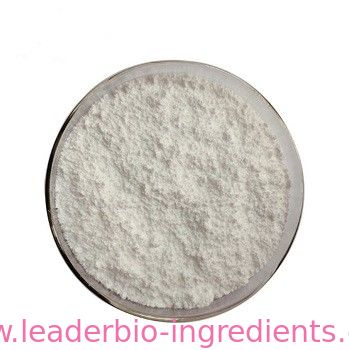| Description |
Carnosine is a dipeptide comprising beta-alanine and histidine. It is found in muscular and other tissues. It has strong oxidant property as it can scavenge both reactive oxygen species (ROS) and reactive nitrogen species (RNS). Carnosine acts as a cytosolic buffering agent and as a regulator of macrophage function.1 Attributing to its ability to form complexes with transition metals, it is used to regulate the content of transition metal ions in biological fluids and tissues.
Carnosine can prevent aging and can be used to prevent or treat complications of diabetes such as nerve damage, eye disorders (cataracts), and kidney problems.2 Potential therapeutic actions of carnosine include antihypertensive effects, immunomodulation, would healing, and antitumor/chemopreventive effects. The chelate compound of zinc ion and carnosine has been used in Japan for gastritis, gastric ulcers, and dyspepsia symptoms.3 |
| Reference |
- P. J. Quinn, A. A. Boldyrev, V. E. Formazuyk, Carnosine: Its properties, functions and potential therapeutic applications, Molecular Aspects of Medicine, 1992, vol. 13, pp. 379-444
- https://www.webmd.com/vitamins/ai/ingredientmono-1038/carnosine
- G. M. Halpern, Zinc-Carnosine: Nature’s Safe and Effective Remedy for Ulcers, 2005, ISBN-10 0757002749
|
| Chemical Properties |
Crystalline |
| Uses |
antioxidant, antisenescense, antineoplastic |
| Uses |
L-Carnosine is a naturally-occurring histidine-containing compound and the biological role of this dipeptide is to act as cytosolic buffering agents. Other roles ascribed to L-Carnosine include action s as neurotransmitters, modulation of enzymic activities and chelation of heavy metals. |
| Uses |
carnosine is an anti-oxidant that works to prevent cellular damage because of free radical activity. Studies indicate an ability to boost the immunological functions. Carnosine is a naturally occurring amino acid. In cosmetics, it has anti-aging and skin-conditioning applications. |
| Definition |
ChEBI: A dipeptide that is the N-(beta-alanyl) derivative of L-histidine. |
| Synthesis Reference(s) |
The Journal of Organic Chemistry, 48, p. 392, 1983 DOI: 10.1021/jo00151a026 |
| Safety Profile |
Mildly toxic by intraperitoneal route. An experimental teratogen. Other experimental reproductive effects. When heated to decomposition it emits toxic fumes of NOx. |
| Purification Methods |
Likely impurities are histidine and β-alanine. Crystallise L-carnosine from water by adding EtOH in excess. Recrystallise it from aqueous EtOH by slow addition of EtOH to a strong aqueous solution of the dipeptide. Its solubility in H2O is 33.3% at 25o. [Vinick & Jung J Org Chem 48 392 1983, Turner J Am Chem Soc 75 2388 1953, Sifford & du Vigneaud J Biol Chem 108 753 1935, Beilstein 25 H 516, 25 I 717, 25 II 408.] |

